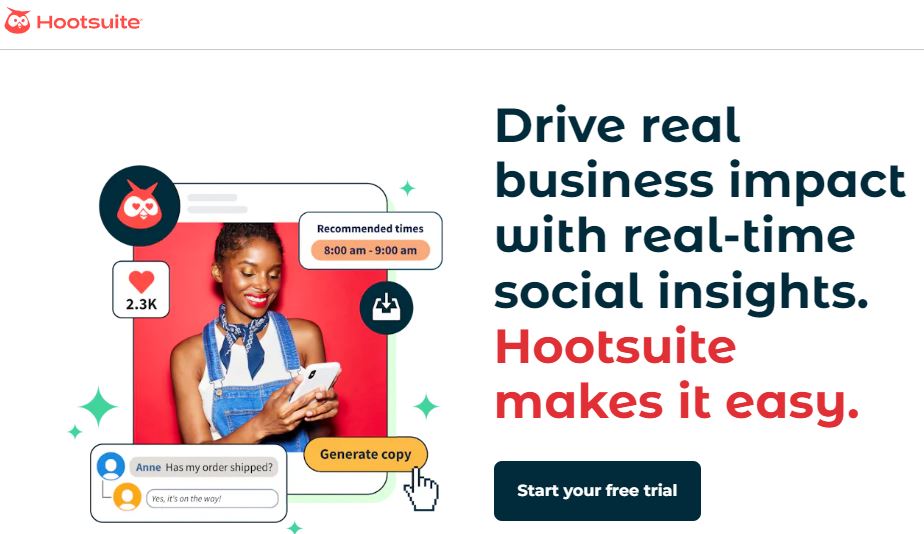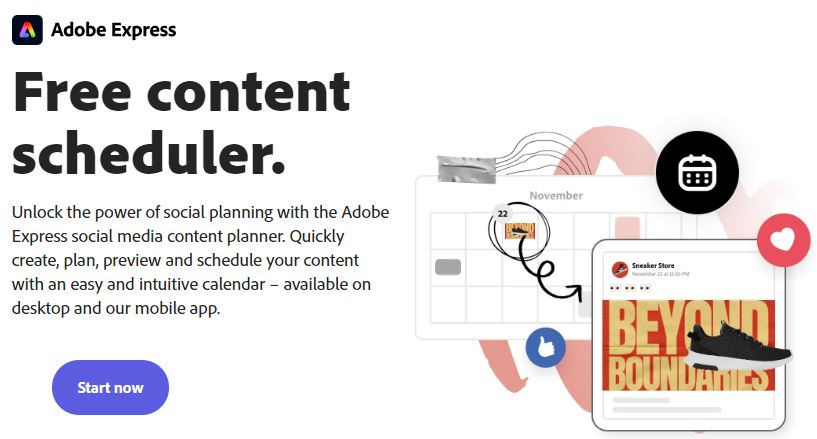If you’re managing a Squarespace website and want to schedule content efficiently, selecting the right software can significantly simplify your workflow. In this blog post, we’ll explore some of the top scheduling tools compatible with Squarespace, highlighting their key features, advantages, disadvantages, and providing a comparison table with pricing and links. Whether you’re sharing blog posts, promoting events, or updating product listings, these tools will help you save time and maintain consistency across your site.

Why Scheduling Software Matters
Streamlined Content Management: Utilizing scheduling software allows for the organization and automation of content posting, enabling you to maintain a consistent online presence without constant manual effort. This keeps your Squarespace site active and engaging.
Improved Workflow Efficiency: Scheduling tools enhance collaboration by allowing team members to work together on content in real-time. This reduces time spent on communications and minimizes the risk of missing deadlines.
Enhanced Planning and Strategy: With scheduling software, you can plan your content calendar in advance, ensuring your marketing efforts align with your business goals and that all promotional activities are timely and relevant.
Better Time Management: Automating the scheduling process frees up valuable time for creative tasks, strategic development, or other essential business functions, leading to increased productivity and better overall results.
Analytics and Performance Tracking: Many scheduling tools come equipped with built-in analytics that offer insights into content performance, helping you refine your strategy and make data-driven decisions to boost engagement.
Increased Engagement: Regularly scheduled posts keep your audience informed and engaged, fostering a loyal following and driving more traffic to your Squarespace site.
Integration with Multiple Platforms: Many scheduling tools integrate seamlessly with various social media and marketing platforms, enabling a cohesive marketing strategy and simplifying the management of your Squarespace content across channels.
Flexibility and Adaptability: Scheduling software allows you to adjust and reschedule content as necessary, providing the flexibility to respond to changing market trends or unexpected events and ensuring your messaging remains relevant.
Also Read: Can’t Type Into Short Description Text Field for WooCommerce Products
What Makes Great Scheduling Software?
A top-notch scheduling software prioritizes user-friendly design and robust integration capabilities, enabling seamless connections with platforms like social media and content management systems, including Squarespace. Advanced analytics and reporting tools are vital for offering insights into content performance, empowering users to make informed decisions. Customizable features enhance flexibility, allowing users to tailor settings such as scheduling frequencies and team permissions. Effective collaboration tools facilitate teamwork by enabling multiple users to assign tasks and approve content efficiently. Additionally, strong customer support ensures that users receive assistance whenever needed, enhancing their overall experience with the software.
Best Software for Scheduling Squarespace
Buffer

Buffer is a widely used tool for scheduling content across multiple platforms. With a focus on social media, it integrates seamlessly with Squarespace’s blogging features, allowing you to plan and auto-post updates.
Key Features:
- No direct integration with Squarespace blog posting.
- Supports scheduling for Facebook, Instagram, Twitter, and LinkedIn.
- Analytics for tracking post performance.
- Browser extensions for quick post sharing.
- User-friendly calendar interface for planning.
Pros: - Clean and simple user interface.
- Effective for managing multiple accounts.
- Affordable pricing for small teams.
Cons: - Limited free version.
Hootsuite

Hootsuite is a powerful social media management tool that offers scheduling across various platforms, including integrations that work well with Squarespace.
Key Features:
- Comprehensive dashboard for managing multiple accounts.
- Scheduling for blog posts, social media, and email marketing.
- Analytics to measure engagement.
Pros: - Advanced scheduling features.
- Excellent for large teams with many accounts.
- Strong analytics capabilities.
Cons: - High pricing for advanced features.
- Steep learning curve.
CoSchedule

CoSchedule excels with its marketing calendar, making it easy to plan and schedule content. It integrates with Squarespace through social platforms.
Key Features:
- Unified marketing calendar for blog posts and social media.
- Drag-and-drop interface.
- Task management for assigning responsibilities.
Pros: - Strong organizational tools.
- Ideal for teams.
- Marketing-specific features.
Cons: - Higher price point.
- Limited to social scheduling for Squarespace.
Later

Originally designed for Instagram, Later has expanded its capabilities to offer scheduling for other platforms, including those connected to Squarespace.
Key Features:
- Visual content calendar for Instagram, Facebook, Twitter, and Pinterest.
- Integrated media library.
- Linkin.bio feature to connect social posts with Squarespace products.
Pros: - Excellent for visual planners.
- Strong Instagram features.
- Affordable pricing tiers.
Cons: - Limited features for non-visual platforms.
- Not ideal for blog scheduling.
Airtable

Airtable is an advanced database tool that can be customized for content scheduling. While not a traditional scheduling tool, its flexibility allows it to be adapted for managing Squarespace content.
Key Features:
- Highly customizable content calendar.
- Collaboration features.
- Integration with Squarespace via Zapier.
Pros: - Versatile and flexible.
- Powerful for data management.
- Scalable for large teams.
Cons: - Requires setup and customization.
- Not ideal for those seeking simple scheduling tools.
ContentCal

ContentCal provides a clean interface for planning and scheduling content across social media platforms. It integrates well with the marketing needs of a Squarespace site.
Key Features:
- Content calendar for social platforms and blogs.
- Collaboration features for teams.
- Workflow management for approvals.
Pros: - Easy collaboration with teams.
- Simple to use.
- Focused on social content.
Cons: - Limited integrations outside of social media.
- More suited for small to medium-sized businesses.
Zoho Social

Zoho Social is part of the larger Zoho ecosystem, which includes tools for CRM and other business processes. It is effective for scheduling social media posts connected to Squarespace.
Key Features:
- Unified dashboard for social media platforms.
- Post scheduling, monitoring, and reporting.
- Collaboration tools for teams.
Pros: - Cost-effective for small businesses.
- Part of a comprehensive suite of business tools.
- Good analytics.
Cons: - Not focused on blog post scheduling.
- Somewhat cluttered interface.
Planable

Planable simplifies content scheduling by enabling team collaboration in real-time before scheduling posts on social media.
Key Features:
- Not suitable for solo entrepreneurs.
- Real-time collaboration and feedback on posts.
- Visual social media planner.
- Approval workflows for teams.
Pros: - Great for agencies or teams.
- Real-time editing.
- User-friendly design.
Cons: - Limited functionality beyond social media.
Trello

While not exclusively designed for content scheduling, Trello can be configured as a content management system with its drag-and-drop boards and checklist features.
Key Features:
- Customizable boards and cards.
- Integrates with Zapier for automation with Squarespace.
- Power-ups for additional features.
Pros: - Highly customizable.
- Free version available.
- Excellent for visual planners.
Cons: - Limited out-of-the-box scheduling features.
- Requires customization for content use.
Also Read: Can WooCommerce Do a 75 000 ACH Payment?
Loomly

Loomly is a content calendar tool tailored for small businesses and content creators looking to manage and schedule social media posts.
Key Features:
- Social media calendar and scheduling.
- Post ideas and inspiration feature.
- Analytics for social media performance.
Pros: - Intuitive interface.
- Great for generating ideas.
- Affordable.
Cons: - Limited integrations with platforms outside of social media.
- Some features are locked behind higher paywalls.
Side-by-Side Scheduling Software Analysis
| Software | Best For | Key Features | Link | Pricing |
|---|---|---|---|---|
| Buffer | Social media scheduling | Browser extension, analytics, easy calendar | Buffer | Free, starts at $5/mo |
| Hootsuite | Large teams | Advanced scheduling, multiple platforms, analytics | Hootsuite | Free, starts at $99/mo |
| CoSchedule | Marketing teams | Unified marketing calendar, task management | CoSchedule | Starts at $29/mo |
| Later | Visual content planners | Visual planner, integrated media library | Later | Free, starts at $12.50/mo |
| Airtable | Custom setups | Highly customizable, collaboration features | Airtable | Free, starts at $10/mo |
| ContentCal | Small businesses | Content calendar, collaboration, workflow management | ContentCal | Starts at $30/mo |
| Zoho Social | Small businesses | Post scheduling, unified dashboard, reporting | Zoho Social | Free, starts at $10/mo |
| Planable | Agencies | Real-time collaboration, approval workflows | Planable | Free, starts at $9/mo |
| Trello | Flexible planners | Customizable boards, automation with Zapier | Trello | Free, starts at $5/mo |
| Loomly | Content creators | Social media calendar, post ideas, analytics | Loomly | Starts at $26/mo |

Final Words on Software for Scheduling Squarespace
These scheduling tools can assist you in automating content, optimizing your time management, and keeping your Squarespace site active without the need for continuous manual updates. Each tool has unique strengths tailored to different requirements, such as social media management, team collaboration, or customized solutions. Select the one that aligns with your workflow and team size to maximize its benefits.
Interesting Reads
10 Best AI Tools for Audio Editing for 2024



